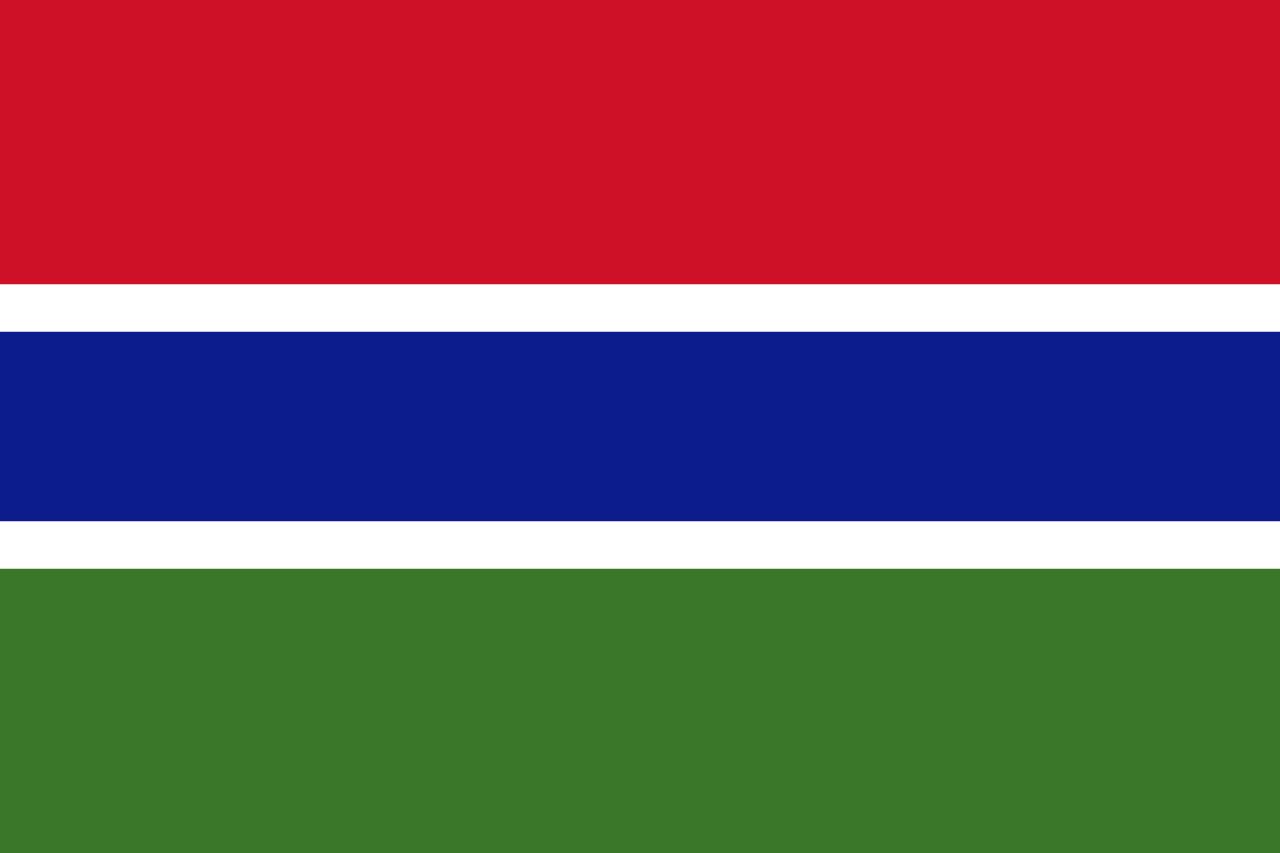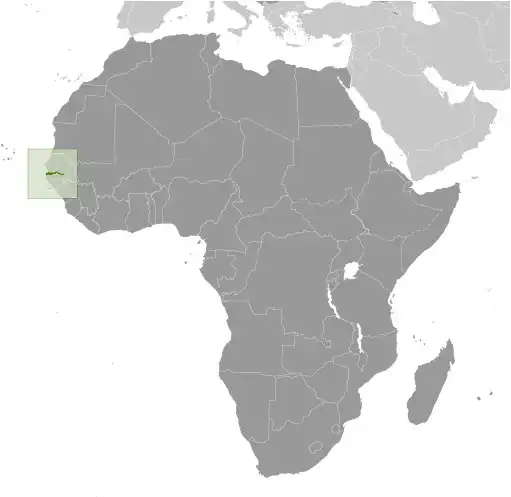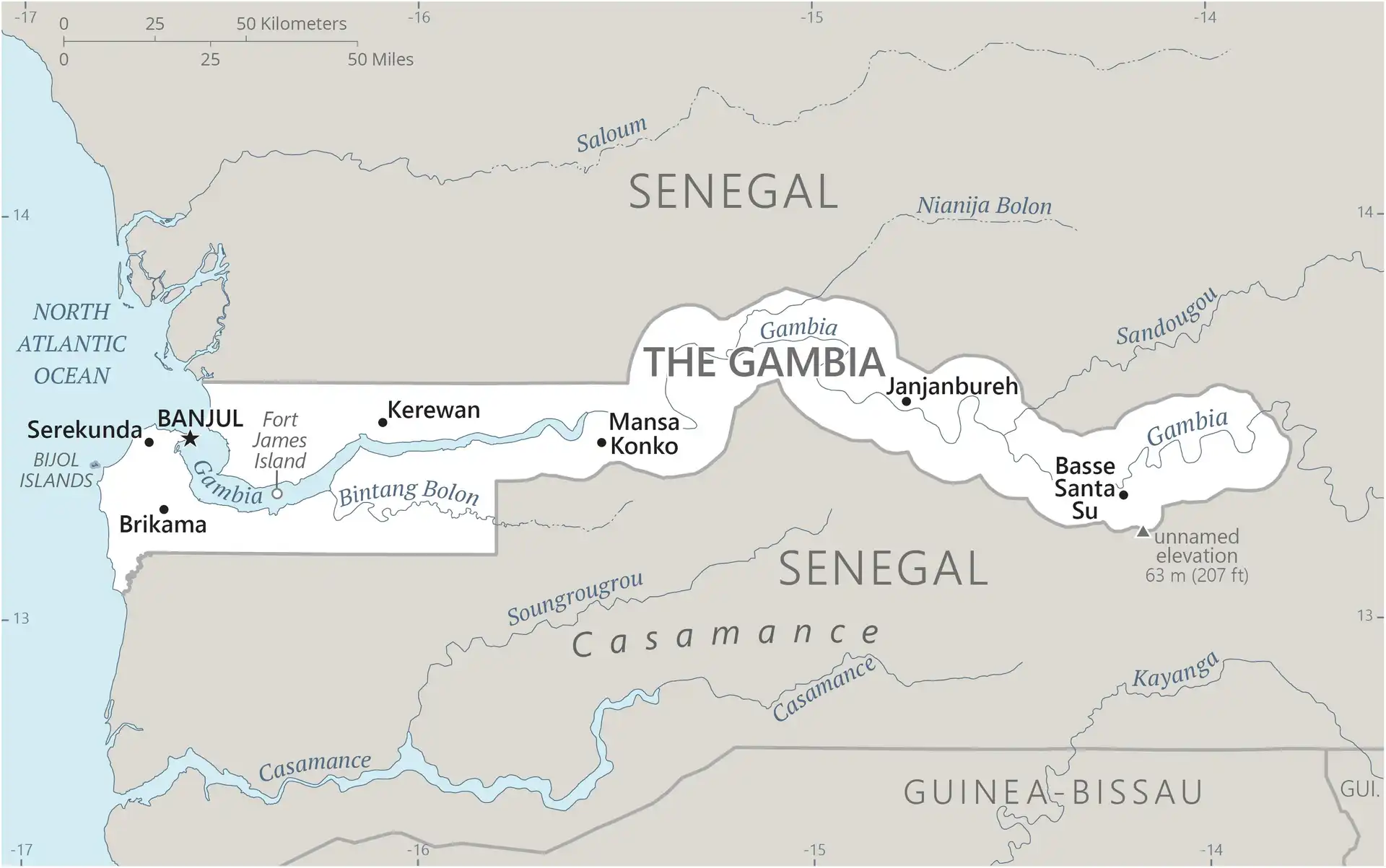
Gambia Country Profile
Key Facts of Gambia

| Government type: | presidential republic |
| Capital: | Banjul |
| Languages: | English (official), Mandinka, Wolof, Fula, other indigenous vernaculars |
Gambia Demographic Data
Ethnic Groups in Gambia(2019-20 est.)
Religious Groups in Gambia (2019-20 est.)
Age pyramid of Gambia

Gambia Economy Statistics
Economic overview of Gambia
low-income West African economy; agriculture-dominant; high poverty rate; heightened inflation; dependent on foreign assistance and remittances; structural reforms conditioned by IMF Extended Credit Facility program
Gambia Real GDP (purchasing power parity) in Billion $
Gambia Real GDP per capita in $
Gambia's Exports & Imports in million $
Top 5 Import Partnerin 2022 (64%) of Gambia
Top 5 Import Commodities in 2022 of Gambia
- cotton fabric 🧵
- rice 🍚
- raw sugar 🍚
- poultry 🍗
- palm oil 🛢️
Top 5 Export Partnerin 2022 (73%) of Gambia
Top 5 Export Commodities in 2022 of Gambia
- coconuts/Brazil nuts/cashews 🌰
- wood 🌲
- shellfish 🐟
- scrap iron 🛠️
- fish oil 🛢️
Geography of Gambia
Map of Gambia

Land and Water Distrubtion of Gambia
Natural Resources of Gambia
- fish 🐟
- clay 🧱
- silica sand 🏜️
- titanium (rutile and ilmenite) 🛡️
- tin 🪙
- zircon 💎
Climate inGambia
tropical; hot, rainy season (June to November); cooler, dry season (November to May)
History of Gambia - a Summary
In the 10th century, Muslim merchants established some of The Gambia’s earliest large settlements as trans-Saharan trade hubs. These settlements eventually grew into major export centers sending slaves, gold, and ivory across the Sahara. Between the 16th and 17th centuries, European colonial powers began establishing trade with The Gambia. In 1664, the United Kingdom established a colony in The Gambia focused on exporting enslaved people across the Atlantic. During the roughly 300 years of the trans-Atlantic slave trade, the UK and other European powers may have exported as many as 3 million people from The Gambia.
The Gambia gained its independence from the UK in 1965. Geographically surrounded by Senegal, it formed the short-lived confederation of Senegambia between 1982 and 1989. In 1994, Yahya JAMMEH led a military coup overthrowing the president and banning political activity. He subsequently won every presidential election until 2016, when he lost to Adama BARROW, who headed an opposition coalition during free and fair elections. BARROW won reelection in 2021. The Gambia is the only member of the Economic Community of West African States that does not have presidential term limits. Since the 2016 election, The Gambia and the US have enjoyed improved relations. US assistance to the country has supported democracy-strengthening activities, capacity building, economic development, and security sector education and training programs.
